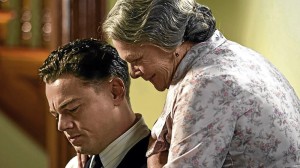Eastwood surmounts cinematic challenge
OUR recent piece on Clint Eastwood’s “J. Edgar” concentrated on Leonardo DiCaprio’s seminal portrayal of the film’s title character, and why it should have been at least nominated for an Academy Award.
Today, let’s focus on the film as a whole, because its achievement is by no means limited to, and defined by, its lead star’s “nomination-worthy” performance: Aside from DiCaprio, the other players who do exceptionally well in the production include Judi Dench as his “lovingly smothering” mother; Naomi Watts as his long-time secretary and repository of his secret files, and Armie Hammer as his deputy chief—and lover.
Despite the film’s firm focus on Hoover’s complex persona, they turn in portrayals that are piercingly revelatory in their own right. Being the youngest thespian, Hammer deserves special credit for the maturity of his portrayal, which remains impressively strong and credible even when his character is depicted as a very old man.
Lead character
But, most of the credit for the film’s success goes to its celebrated auteur, Clint Eastwood, who has a particularly difficult cinematic challenge to surmount in this production, because its “antihero” lead character is sometimes so obdurately impervious to “understanding.”
Article continues after this advertisementBut, Eastwood is able to cut through all of the misconceptions and downright lies that have adumbrated through Hoover’s long and controversial career, by “ruthlessly” wielding the “scalpel” of truth—and nothing else but.
Article continues after this advertisementThat truth is often off-putting and sometimes shocking to behold, but that doesn’t intimidate the director and his similarly uncompromising lead player. Eastwood and DiCaprio make a great cinematic team, and their creative partnership in search of the truth is “J. Edgar’s” true hallmark.
On his own, Eastwood goes even more deeply than DiCaprio to do full justice to Hoover’s complex life, career and influence, for good and bad, on the American nation. It’s a career full of controversy, of secrets exposed and obdurately hidden—and sometimes used as weapons to make even presidents do the “right” thing. Having served eight US presidents, Hoover has seen it all, and Eastwood’s challenge as a filmmaker is to sum all of that up in only a little over two hours.
Long narrative
He accomplishes that tough assignment with great insight and dispatch, even if he has to gloss over some key “chapters” in Hoover’s long narrative.
On the other hand, the film’s biggest error is one, not of omission, but overextension—its excessively long focus on the kidnapping case involving American hero and icon Charles Lindberg’s little son. Yes, the case was one of the 20th century’s most celebrated crimes, and Hoover’s eventful success in bringing its perpetrator to justice did “make” the Federal Bureau of Investigation’s reputation—but, the screen time devoted to it is simply too long and makes everything that happens after feel like an anti-climax.
All told, however, “J. Edgar” is an incisive and insightful study of a powerful and controversial public figure, as full of seeming contradictions as its famous/infamous protagonist/antogonist was!
